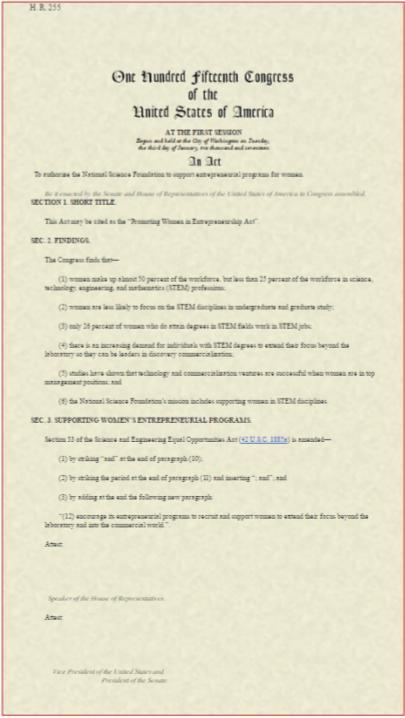
by Kay Kim, junior editor in chief
The husband raises his fist of “authority” to strike his wife. She blocks her teary and tattered face with her bruised forearms in order to defend herself. The house is in complete outrage. Pieces of broken glass litter the floor. A punch to the wall embellishes it with a hole. A punch to her face turns the face red, then blue and purple. Her heart may just as well be the shattered glass on the floor that will only be swept away into the garbage.
Only men beat women?
As in the scenario above, a majority of the people picture a man as an abuser and a woman as a victim. Yes, it is true that in most cases – the man or the male partner is the batterer. It happens to be this way because today’s society is patriarchal.
“We still live in a society that objectifies women. We still live in a patriarchy. It comes down to belief that on some level, women are just a little bit less than men,” associate director at NCADV (National Coalition Against Domestic Violence) Gretchen Shaw said.
However, women too, can be a batterer. One in every three women and one in every seven men are victims of severe violence by an intimate partner. Domestic violence can happen to anyone, regardless of race, culture, age, gender, social status, economic status, etc… It can even happen to the disabled, including the deaf.
What is domestic violence?
The word “domestic violence” is constantly mentioned, so what could it possibly mean?
Domestic violence is any type of abuse within an intimate partner relationship. An intimate partner is defined in relationships between a husband and a wife, a parent(s) and a child (or children), boyfriend and girlfriend, et cetera.
Majority of the people visualize physical damage when they hear “domestic violence”. However, there is more than only physical abuse. The other types of abuse are largely categorized into emotional, psychological, financial, sexual, verbal, and social abuse.
Physical violence includes punching, hitting, kicking, slapping, batting, giving the victim a black eye, et cetera. In extreme cases, it can escalate to killing the partner. Any harm that is done with the physical body to another physical body is a physical abuse.
Evidence of physical abuse, such as a bruise or a mark, on the victim’s body is enough proof to instantly arrest or convict the abuser of the crime. However, emotional and psychological abuse do not carry visible evidence. Therefore, it cannot be addressed or evaluated right away, which means an arrest cannot happen immediately.
Police officers do not analyze the emotional or psychological abuse. They can only fill out a Direct Incident Report. The report will then be brought to the police officer who is in the domestic violence crime unit. Then, the abuse will be evaluated.
Emotional and psychological abuses include, but are not limited to, manipulating (playing mind games to make the victim think he or she is insane), discouraging, name calling, and denying the abuse never happened.
In the case of financial abuse, the abuser controls all the income and expenses of the house, and/or obliviates the victim from any economical status of the household.
One example of financial abuse is when the victim is obligated to ask for money if he or she needs to use it. The victim holds no money and only has money when he or she really needs it, which makes the victim economically independent.
Sexual abuse includes withholding sex or forcing sex at times when the victim does not wish to do so. It also includes forcing sexual activities with others, aside from the abuser.
Any name calling or shaming to belittle or defect a person’s self-esteem or feeling is verbal abuse. Other forms of this abuse include threatening to leave, hurt, or kill the victim, other family members, and/or their children.
Another type of abuse in a domestic violence relationship is social abuse. Among the many forms of this abuse, isolation is most common. To exercise this tactic, the abuser can forbid the victim to contact his or her family and friends, suspend news sources, heavily control who the victim meets or talks to, demand loyalty, and use jealousy to justify actions. Without anyone to talk to and with no medium to attain news, the victim starts to become dependent on the abuser. This makes the victim more vulnerable to manipulation because the victim has no other source of communication.
Other tactics of abuse include using children or valued possession as a threat, intimidating, using social status, and committing child abuse.
Why do abusers abuse?
There are several different causes for abuse. The most prominent cause arouses from the eagerness to have power and control over somebody else.
“They [the abusers] don’t like you doing anything great,” domestic violence survivor Marchlewski said.
Marchlewski was a graduate, who was studying Mental Health Counseling at a CUNY college and working as an academic adviser. However, she had to give up her educational opportunity because her former husband, who was an alcoholic, blamed her for his misfortunes, including his hunched back that he developed from lack of care. She often came home to him drunk with vomit throughout the house. Her cherished family-dog then fed on his vomit. After the cycle continued, she decided it would be better for her to quit school and focus on the issues at home, despite the fact that she was the only person who was supporting them and her dog at that time.
The abuser tries to prevent the victim from obtaining any information, so that the victim will be more vulnerable to manipulation. Therefore, they don’t want the victim to do anything that is considered good or kind-hearted.
In other cases, the abuser may have grown up in a domestic violence family himself. When a child grows up in a domestic violence, he (or she) becomes blind to the fact that it is wrong; abuse is what he (or she) has seen all his (her) life. They start to believe love should be portrayed with violent behaviors.
According to Psychology Today, abusers are commonly diagnosed with Antisocial Personality Disorder, Borderline Personality Disorder, or Narcissistic Personality Disorder.
Antisocial Personality Disorder is when a person is deceitful. He or she repeatedly lies or creates a persona to ingratiate others or to gain pleasure.
Borderline Personality Disorder is an “instability in moods, interpersonal relationships, self-image, and behavior” (Psychology Today).
Narcissistic Personality Disorder is a condition of having too much pride in oneself. People diagnosed with this condition are usually self-centered and manipulative.
Why don’t (or can’t) the victims leave?
Many people question, “Why didn’t she (or he) just leave?” However, in most cases, the statement is, “She (or he) can’t leave.”
There are a variety of circumstances that prevent victims from leaving their perpetrators.
One circumstance that prevents the victim from leaving is that the victim still loves his or her perpetrator.
“It’s not like the abuser is abusive all the time. There are periods and times when they [abusers] can be really wonderful, very supportive, and loving, and they don’t show abusive behavior. So, it [abuse] is not constant,” Shaw said.
In the domestic violence cycle, there is a phase called the “honeymoon phase”. It is when there is neither abuse nor intimidation; everything and everyone is at ease. Therefore, the victim can still love the abuser.
In other cases, the victim is not economically or socially independent enough to part from the abuser. The victim might not be economically stable because of economical abuse. Also, isolation has prevented them from reaching out to their family and friends for refuge. There might not even be a nearby or an empty domestic violence shelter for the victim to stay in.
There may be events, where the abuser won’t allow the victim to leave because the abuser wants to do everything in his or her power.
It is also important to remember that the victim can be a parent of a child or several children. For a mother to leave her child with an abusive father isn’t the ideal choice. She would rather stay and get abused in place of her child.
It is proven that the most dangerous time for a battered woman is the two weeks following her leave of her abuser. They are at a 70% higher risk of being killed during those two weeks than at any other times.
Effects of abuse
The effect(s) of abuse can vary from person to person. However, the important fact is that abuse greatly affects the way the victim thinks and and interacts in society. It not only leaves physical evidence, but can also defect the victim’s mental and psychological stability. Some of the most commonly reported effects include PTSD (Post Traumatic Stress Disorder) and depression.
Domestic violence can also lead to a decline in self-esteem. The victim may also develop fears of approaching people and talking to them. Marchlewski shared her personal effects.
“I felt like I said something wrong; I replay and overanalyze. I thought I was ugly or fat. I was not able to make sound decisions,” Marchlewski said.
Also, the victim’s complexion may change in an unfavorable way. He or she won’t even smile as widely as he or she once used to.
“My friend told me, ‘You don’t smile the same.’ But that’s what I was known for – my smile – even in elementary school, so I was offended. Then, I began to know something was really wrong,” Marchlewski said.
As in the case of Marchlewski, she was affected psychologically and emotionally.
Some battered women lose their jobs as a consequence because of absences due to illnesses from the abuse. They may also have to move many times to avoid their abusers, which prevent them from a stable job.
Other effects of battering on women include isolation and abandonment. Isolation, used as an abuse tactic, is also an effect because the victim does not hold any contact information. Sometimes, women can be abandoned by their churches when they separate from their abusers because some religions prohibit separation or divorce under any circumstances.
Children who witness domestic violence in their homes may also be affected. They may experience emotional instability. They are at higher risks of abusing drugs or alcohol, running away, being suicidal, and/or committing crimes. Boys who grow up in this environment are more likely to abuse their female partners. Girls who see their mothers being abused generally grow up to be abused themselves.
Bringing it to court
Domestic violence cases are either brought to the criminal court or the family court, depending on the victim’s preference.
When there are children involved in the case, the last thing the authorities prefer to do is to bring the children to ACS (Administration of Children’s Services). The authorities contact any other relatives to see if they are willing to watch over the children. If no one is willing to supervise the kids, then they are sent to ACS.
According to the deputy prosecutor at Clark County Circuit, domestic violence cases are challenging to weigh because there often are not additional witnesses to the things that happen in a household. Evidence relies on the testimonies of the defendant and the victim, so credibility becomes critical. Therefore, in criminal trials, it is the jury’s duty to weigh the statements of both parties and determine who is telling the truth and whether the assertions can be proven.
“As the State, there are limited circumstances where we are allowed to introduce instances of the defendant’s past conduct that weigh on his or her credibility. However, when it is permissible we do utilize that opportunity to help the jury in weighing the conflicting testimony,” deputy prosecutor at Clark County Circuit Court 3 Kaitlin T. Coons said.
It is recommended that victims file police and/or medical reports, so that they hold evidence, even if they do not plan to go to court right away.
Once the court decisions have been made, it is the police’s job to comply with the decision. In a case, where a restraint order has been adjudicated, the survivor must notify the police if the abuser breaks the order of protection. Sometimes, when the police responds in a timely manner, the situation will be handled appropriately. However, there may be risks that the abuser has hurt or even killed the partner.
“It [order of protection] is more a deterrent than a guarantee of safety. The perpetrator would face consequences for breaking the OP [Order of Protection] later, so it can still be an useful deterrent. But what good is that if the perpetrator doesn’t care and the abused partner has already been hurt or was even killed?” youth program coordinator at KAFSC (Korean American Family Service Center) Lydia Baek said.
Why so shunned out?
Domestic violence as been around for centuries and millenniums. It is not sure when is first emerged. Some domestic violence laws trace back to 753 BCE, when “wife-beating” was legally accepted under the Laws of Chastisement.
Despite its relinquishing existence, domestic violence receives so little attention. It is such a secretive topic.
“Relationships, especially marriages, are historically afforded a great deal of privacy in the eyes of the law,” Coons said.
“Other times it’s actually risky to talk about abuse. It might make their abuser hurt them more later. Another reason why domestic violence can be difficult to disclose is that it can affect they way people view us and/or our families or relationships. Disclosing abuse might make a loved one look bad or the entire family disgraced,” Baek said.
It can also be hard for a victim to find support.
“If my mother had told me to run, I would have done so. I expected her to, but she didn’t. My mother made excuses because she didn’t see his [ex-husband’s] behaviors. I had no support system. My mother wasn’t there. To everybody else, he [ex-husband] was a perfect, amazing guy. In front of others, he acted as the perfect husband and boyfriend – nice gestures to my parents. He held the door for them. With us two, nothing like that,” Marchlewski said.
On top of that, unclear laws regarding domestic violence add to its difficulty. Even if a victim files an abuse, abuse that is not visible to the eyes are hard to evaluate. It is difficult to hold an abuser accountable for emotional or psychological abuse. It can be counted under harassment, but it is tricky because the abuse would have to meet certain requirements for it to be considered a harassment.
Reaching out to the public
Because domestic violence is such a secretive topic, it is important to educate and inform the public about what domestic violence is. This will help the general public’s apathetic attitude to be changed.
“Advocates can support victims by informing the public about power and control dynamics. Awareness as a community leads to acceptance. We can only hope that awareness will help victims feel comfortable to seek help,” Coons said.
As a community that advocates for domestic violence awareness, it is crucial to propose laws that the authorities could work with. Having no laws mean no evaluation.
In 1993, marital rape became a crime in all 50 states for the first time. Until then, a rape between a married couple could not have been reported to the authorities for an arrest. There still are some countries today that do not accept marital rape as a crime.
Laws will give the power to change culture’s influence on domestic violence.
Approaching a victim
Students in school, who may be experiencing domestic violence at home, can always reach out to their guidance counselors.
“I build trust with them [students experiencing domestic violence at home] by being open and honest with them. Students need to know that not everything they tell me can be kept confidential. I let students know that everything is confidential except if they tell me that someone is hurting them, they are hurting themself or they have intentions of hurting someone else,” middle school guidance counselor Ms. Paplow said.
It is also important to know how to approach a victim in general. The listener should not judge the victim, but focus on concerns for the survivor’s safety. Acknowledge their feelings and respect their choices. Provide them with resources, and/or help them plan to ensure their safety. Encourage them to speak to professionals. However, the final decision is on the victim.
“Do what you can, but know that you can’t save your friend. They make the final decisions for themselves,” Baek said.
Advice from Marchlewski
- Love yourself: “I didn’t love myself fully. I did not know or see for myself. I had no boundaries or limits. Know what you really want in life before somebody else comes to share that. Find, not what parents want, but what you want.”
- Treat the body as a temple: “The body is a temple and it needs security. If you vandalize a real temple, the security will remove you. I needed to remove him [ex-husband]. Know that you are precious. When something is wrong, treat it and find support.”
- Form a wholeness of self: “Know your purpose, career, likes, dislikes, etc…”
















































